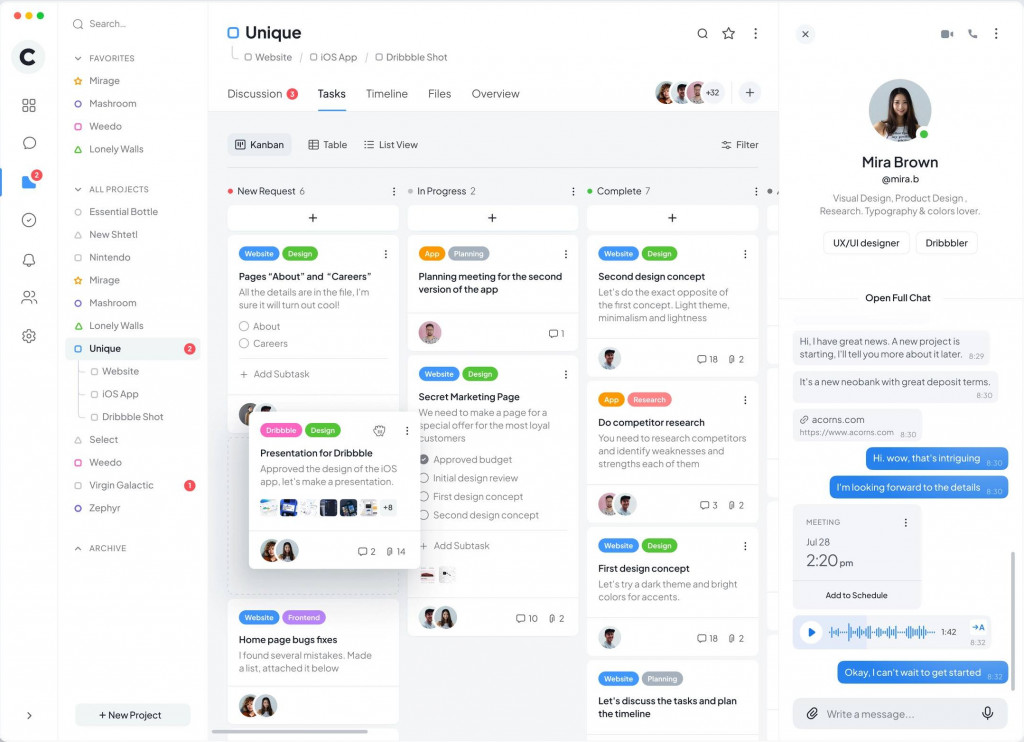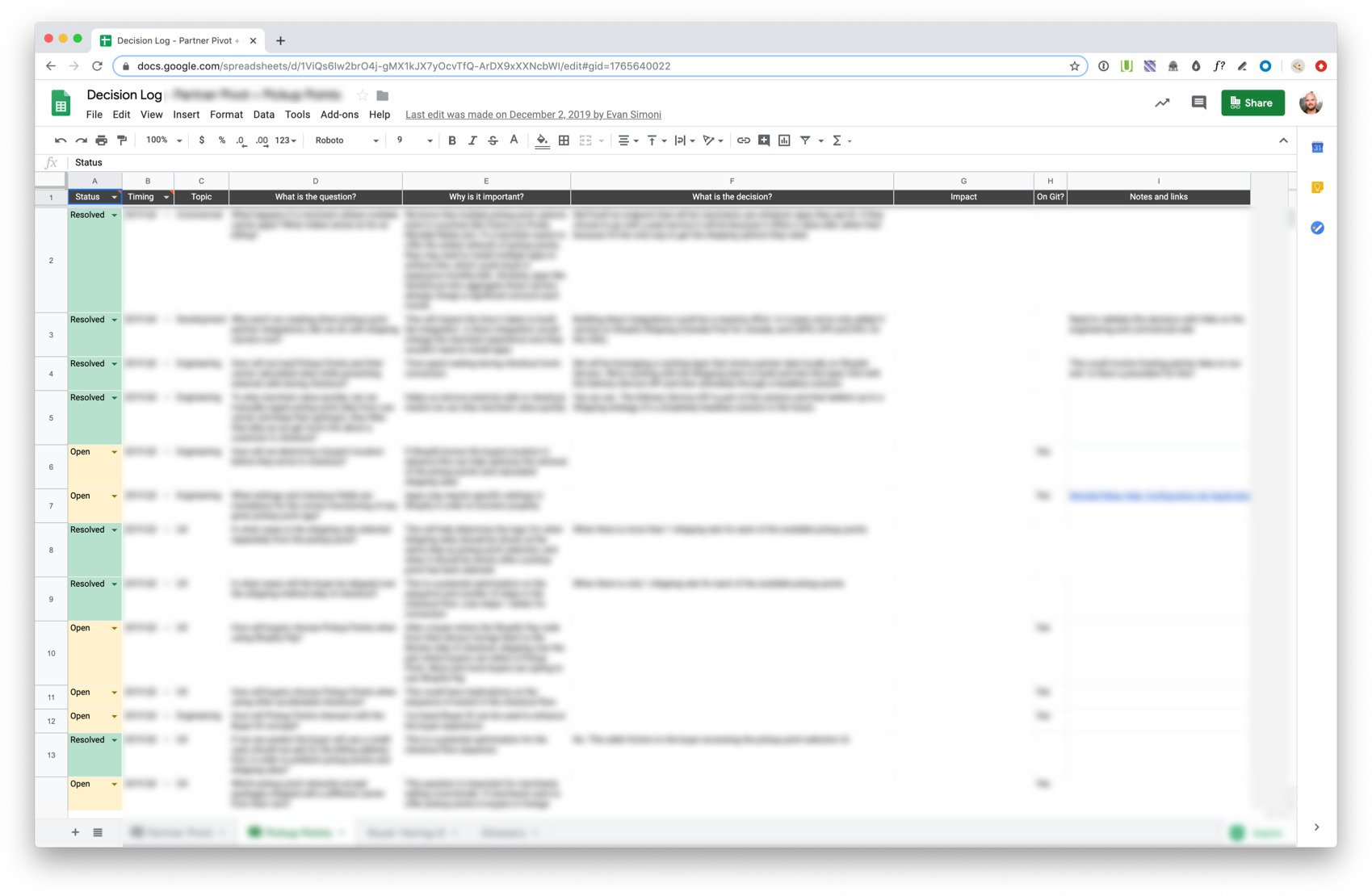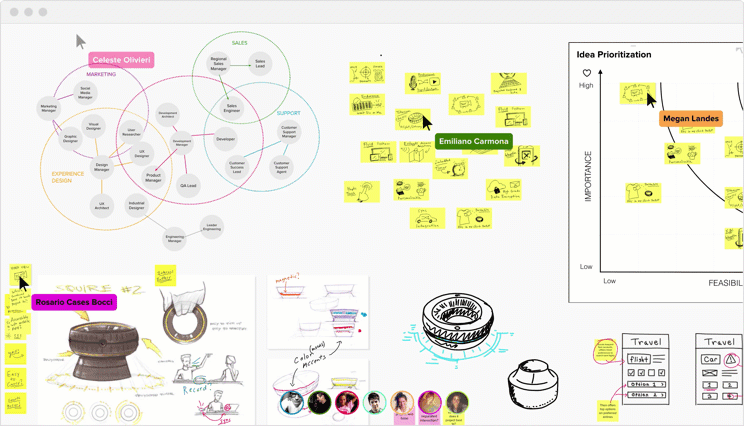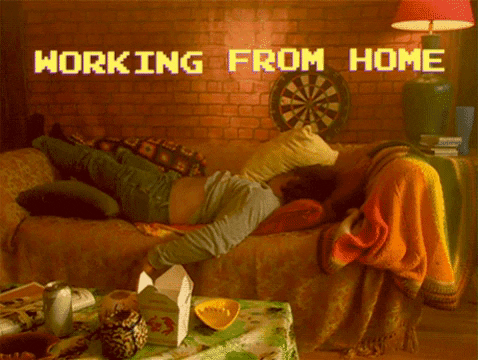Remote work in design is when you don’t need to go to the office every day to fulfill your duties. After the COVID-19 pandemic, it’s becoming a preferred option for all-sized businesses around the world. In 2023, 12.7% of full-time employees now work from home. At the same time, 28.2% prefer a hybrid model. 98% of people want to work remotely for at least for small periods. It’s not surprising: there are many remote work benefits. From less money spent on office space for an employer to a more flexible working schedule for an employee.
Contents:
However, the sudden shift may present extra difficulties in the UX design industry. If you are managing a design team, this article is useful to you. I have prepared a description of the most common remote work challenges, along with the most effective solutions. All are based on many years of successful remote working experience with design teams from large companies like Google or Cisco.

Team Management Dashboard by Conceptzilla
Types of distributed teams
First, determine the type of team you now have. Alaine Mackenzie from Shopify says that there are 3 main types of distributed teams:
- 50/50 or majority co-located, everyone else remote
- majority remote, minority co-located
- all or mostly remote.
How to manage distributed teams? The easiest type to manage is the third one, where the UI/UX design team is completely remote. In case there is a separate group, all the communication and decision-making tend to gravitate towards it. To avoid such a problem, Matt Hryhorsky, who works in Shopify as well advises distributing people in separate rooms, even when they are in the same building, and connecting them via their laptops, like the other meeting participants.

Work from home by 𝙈𝙞𝙣𝙩𝙞𝙤𝙣
Remote design work problems and best practices
So you have an office-based company gone remote, at least for the time being. How to keep up your productivity when working remotely? What are the things to consider when working remotely? Let’s look at the common challenges that you most likely have already encountered and some effective work-from-home tips.
It’s unclear what’s happening when managers lose control
This is not only about remote work. A properly established workflow isn’t likely to fall apart because employees are now stationed far from each other. You didn’t keep track of what was going on just by talking, right? If there’s a CRM system, but everyone is used to first verbally approaching the task before actually setting it and then waiting for its completion, then there may be some problems.
- Create a common information space
Put all the tasks in the task tracker. If there is no task in the tracker, there is no task. The most popular trackers are Pivotal Tracker, Trello, JIRA, and Basecamp. You need to find a task manager that is convenient for everyone. It’s important that the tasks are not mixed up, lost, or duplicated. Everything should be simple and transparent. Next, you need to create a single information space, like Google Docs, with all the shared documents and everything that is necessary.
- Maintain calendars and ensure transparency
During the remote workflow, all events must be outlined in the calendar (like Google Calendar or Toggl Plan Calendar). Similarly, if an event is not on the calendar, it doesn’t exist. It’s necessary to set clear tasks for junior designers along with appropriate deadlines. The employees themselves plan their working days. Remote workers need to be trusted much more than the team that is situated in the same open space.
For tracking, you can apply remote work tools with screenshots like Hubstaff or Time Doctor. These tools are designed to discipline employees. They are also good for making reports for clients, analyzing employee performance, and making estimates for future tasks. Using the tracker, it becomes possible to identify real problems and solve them efficiently, at the same time helping the employees and making them more productive.
At Shopify, they practice recording as much as they can and use useful tools like decision logs and summary channels that help them keep track of all the activities and increase transparency. Cisco shares artifacts in real-time and ensures that output is being created and captured in digital form so that everyone has access to it equally.

An example of a decision log used by designers at Shopify
Quality control is lost. Design critique
With all the employees in the same space, it’s easier to hold discussions and generate new ideas. In-person workshops are much easier than remote ones. After all, home is a personal space. There’s no shared space and context there, like, for example, sketches people make during meetings. How to establish a process of control over the remote employees so that the result satisfies both sides?
In Trello they use Huddles. They set up two huddle groups (five designers each) with a new presenter each week and run with these groups until everyone has had a chance to share work. Plus, they have weekly design roundtables, when designers meet in Zoom to share what they’re working on, including a critique time.
At Nielsen Norman Group they use various tools to achieve a smooth remote ideation workshop. For example, they might share webcam feeds and audio using Zoom or GoToMeeting. And to share ideas visually they prefer Google Docs, Miro, or Mural.

Image: mural.co
Communication lost
Communication when designing an app remotely is especially difficult. Most experts agree that 70-93% of all communication is nonverbal. Working remotely, the team lacks this valuable way of connecting to each other, which means that they need a simple and efficient communication system.
- Focus on video calls
The video gives a little control and discipline. You will be sure that your team members listen to you carefully, and are not having lunch, smoking, or taking a shower. First, select only those calls that you definitely can’t do without and make them by means of video. Then use as much video communication as possible. This point is stressed by all teams that have extensive and successful remote working experience.
- Share information flows
Make an agreement on in which cases you communicate by a planner, when you write emails when you use messengers, and so on.
- Check whether you’ve been understood
“Now tell me how you understand what you need to do”. Record in writing the results of verbal communication.
- Plan each meeting
Schedule meetings and plan what’s going to be discussed in advance. It saves time.
- Introduce the common rules
Create a stable and shared working system for the whole remote development team. No hidden solutions, the maximum possible transparency, no “I thought we decided on that” — everything must be described, fixed, and shared. Introduce a clear reward system. The rules must be uniform and valid for all team members.
This may be an eye-opener. After all, it seems that if you trust your employees, and your design team is great at communication and motivation, everything is going to be fine. Not necessarily! It’s important not only to determine boundaries and rules but also to check that all employees abide by them. The situation when everyone is equal before the law smooths out a lot of contradictions and disagreements.
As a result, you’ll get a fine-working system: the task is set in the task manager, the colleague tells you about it, you analyze whether they understood it, and if all is OK, the work begins. If there is a misunderstanding — start all over in a way that is convenient: verbally, in writing, by setting instructions or making a video, etc.
Trello holds quarterly design team retros and Zoom video chats for communication and weekly manager 1-on-1 meetings. Every week managers and designers meet for an hour to discuss growth profiles, work in progress, challenges, and opportunities.
Brady Voss of Facebook stresses the need for good connection and is a fan of over-communicating:
“It’s always safe to assume people don’t know what you’re thinking.”
If you’re only starting your remote work management career, you might be a stranger to the problem of different time zones. Still, it’s very serious and deserves consideration even in advance. A situation when team members are situated in different time zones both complicates the teamwork and increases the risk of emerging errors. For example, it may happen that a remote employee completes the task and sends it for review, but a manager will have an opportunity to check on it only six hours later.
Let your employees choose a working schedule that is the most convenient for them. Your remote team can be located in different time zones, so there’s no point in focusing on a certain schedule. At the same time, you can exploit this opportunity and turn a usual day into a 24-hour service for the clients:)
For smaller, easily reversible decisions everyone on the team in Shopify has the trust and autonomy to move ahead. For major decisions though, they document the proposed decision and wait for 12–24 hours, allowing them time to weigh in before moving ahead.
At Google, they have an internal “snippets” tool for posting regular updates on work, typically on a weekly basis. Snippets serve to share the latest mock versions, research reports, study plans, hiring updates, and anything else of importance.
Complexity of self-discipline
This point is useful for managers as well as for designers. Indeed, it’s difficult for some people to maintain the same level of safe discipline at home as in an office. At first, remote work seems like a single huge advantage. No meddling colleagues or managers, no noise, always comfortable room temperature, etc. But there are worse difficulties: partners, children, dogs, overdone steaks, and oh such a welcoming couch or nice weather.

Image: giphy.com
There is a significant number of people who prosper from working at home and a lot of office employees who don’t work effectively.
- Introduce work rituals that help you get into the flow
The first time can be difficult, so the rituals can be very helpful. For some, it’s a piece of special music, for others, it’s a set of routine newsletters that they check on before working. My ritual is making a cup of tea and writing tasks in my notebook.
Designer Mark Boulton tells about his rituals when working remotely: he wears shoes during work hours and commutes to his desk, taking a walk. This may be funny but it helps him move from the mode of being at home to the mode of being at work, and back again. A coach, speaker, author & consultant Jeff Gothelf claims that one of the solutions is initially hiring the right people who are accustomed to being given an implicit level of trust and understand how to work remotely.
- The workspace must be dedicated to working only
Work and non-work are two parallel lines that should not meet. If children are at home, a separate room is needed. Every family member should realize that you’re working and cannot be disturbed during certain hours.
The challenges of remote teamwork and loyalty
Remote employees see only those tasks that are directly related to them. But they may not be aware of the goals or strategy of the company. Moreover, many people need to be a part of the team and feel the collective creative process. Even people who prefer working on their own periodically need to communicate with colleagues to learn new ideas and share experiences. Remote designers are often denied this opportunity.
- Organize chats and video conferences
It’s useful for people to communicate informally, make contacts, and share their points of view.
- Share the news with employees
Introduce a monthly digest with official announcements, work results and plans for the next month, a list of birthday people and those who celebrate the anniversaries, and introductions of newcomers.
- Establish general motivational meetings
All project participants must understand where the company is coming from, what are the challenges, and what will allow the team to be even more effective than before. Be sure to support and implement employee initiatives. Try to praise them and be thankful.
- Establish IRL meetings
There is no denying the rapport-building power of face-to-face time. Not at the height of the pandemic, of course, but this advice is valid.
Nielsen Norman Group has three channels for informal communication: for sharing pet photos, photos of where they happen to be working that day, and for requesting quick input on anything a person is currently working on.
Wherever possible, the team of Trello is encouraged to work closely with their design peers. It usually happens within a Trello board, a Mural board, or a Figma file. Every year the Trello design team flies to NYC to hang out IRL for a few days.
In conclusion
I don’t believe that remote work poses problems that are absent in a standard office mode, apart from maybe issues with time zones. The ability to work with a remote team is a sign of the maturity of the organization and the professionalism of a manager. Statistics show that in the future the number of remote teams will only rise, to say nothing of the remote work trends of today. Having one of the most popular careers that work from home there is, designers are able to make the most of it.
Are you in search of an experience remote team of developers? Contact us and let’s create a versatile application or website.
